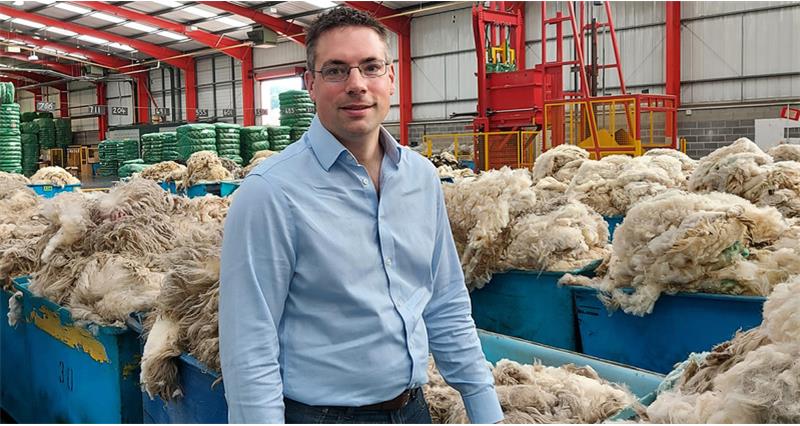“Over the past twelve months we sold about 500 tonnes of wool as fully traceable, generating an extra £125,000 that went into the pot for our members,” he says.
The scheme offers a traceable solution to manufacturers and end brands who want to buy British Wool for their products and can cover a specific wool type or location across the UK.
The automated solution works via data matrix codes which are allocated to wool sheets on receipt and, after grading, link the individual grades back to farm. Once packed into saleable lots, each lot can be linked back to all the farms that produced that wool.
“It’s very similar to what the milk industry does where you see a photo of the farmer on the milk,” Andrew explains. “Essentially we’re replicating that for the wool industry.”
Increasing value on British wool
The scheme drives value for farmers because the traceability data comes at a premium above the British Wool auction price. It works for the end brands because it enables them to differentiate their products with a traceable wool logo, which in turn, allows them to charge a premium themselves.
With about a third of British Wool sold now going to companies that are part of British Wool’s licensee scheme, Andrew hopes the scheme will continue to gain traction and help to drive prices for members.
Speaking to British Farmer and Grower after British Wool confirmed 2022 prices, he says: “I want to be growing the proportion of wool that’s traceable and that can help us to deliver the best possible price for our members. I don’t want to be paying these prices, I want to be paying members a return that is fair and making wool profitable to grow.”
“British Wool is here to support businesses, so if you have an idea of how to use wool, the team will help and advise through process of bringing the product to market.”
Andrew Hogley, British Wool Chief Executive
Traceability story ever more important
Getting more brands on board is what Andrew calls the “challenge and the opportunity” – an undertaking British Wool is working toward by underlining the environmental and animal welfare standards sheep are kept to through its sustainability and brand identity.
“This is something key we have done differently during the past year, and it does seem to be gaining traction with the brands.”
He points to the mattress and bedding sector, noting: “In the past 18 months we’ve had a number of significant brands wanting the traceability story; it enhances their ability to sell their products in the retail environment.”
The niche, he says, is that price suddenly isn’t the only consideration for a brand if they want story behind the wool.
“There was a point last year where we had a mattress manufacturer and two carpet manufacturers all wanting to do Herdwick ranges and be associated with this breed. The price we were getting for Herdwick wool was more than covering the cost of shearing, so it is possible.”
While he acknowledges this was on a limited supply of 50 tonnes, he points to the example as “absolutely what we’ve got to look to deliver on behalf of our members”.
He adds: “I don’t want to just sell 500 tonnes that is traceable, I want to be selling a million or two million tonnes as traceable. It’s about working with the brands and finding the stories that work for them and then that additional value goes into the pot to maximise returns for our members.”
Elsewhere, Andrew champions innovations in wool use, such as biodegradable tubes to replace plastic tree guards and Sustainable Rope Ltd, which makes rope from 100% traceable British wool sourced from the British Wool Auction.
“British Wool is here to support businesses, so if you have an idea of how to use wool, the team will help and advise through process of bringing the product to market. We want those businesses to succeed so we’re open to having conversations and working with innovative companies.”
